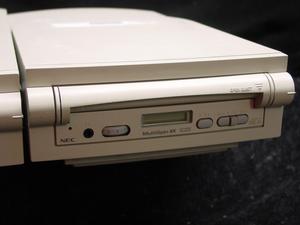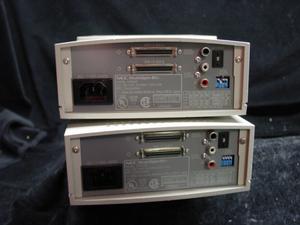You are reading the older HTML site
Positive Feedback
ISSUE
3
october/november 2002
Fun With Used Equipment, or How to Put Together a $3000 Audiophile CD Player for
$555!
by Ed Morawski
My introduction into the audiophile world was a Muse 2 DAC. I once laughed at the thought of adding a separate D-to-A converter, believing that the one built into my CD player was surely fine. I laughed until I heard the Muse 2. What an unbelievable improvement! I can still remember all the detail revealed for the first time. With its 20x8 bit oversampling, the Muse was cutting edge back in 1993, and holds its own today because we still use the Redbook CD format. The Muse also has an overbuilt power supply and topnotch construction, but the best part is that this unit, that once sold for $2000, can now be had for as little as $500 on the used market.
What to pair it with for a transport? I have a surprising suggestion. Look on eBay in the computer section for an NEC MultiSpin 6Xe CD-Rom drive. The "e" stands for "external," and means the Model CDR-602 is a standalone CD-Rom drive with its own power supply and, more importantly, a S/PDIF digital output. These CD-Rom drives are usually available at prices ranging from $2.95 to $12.95. I just bought two for $2.95 plus shipping! They do require a caddy, so make sure the one you buy includes one. (A caddy is a plastic and metal holder for the CD which then gets inserted into the CD-Rom drive.) Interestingly, many of the top CD makers now use computer CD-Rom drives in their best players. Why? Because they are rugged, dependable, and can read any type of CD, CD-R or CD-RW. The drawback? No remote control. You have to get up to change tracks or, of course, you could just hit "play" and let it go through all the tracks. While you're on eBay, pick up a Canare Digi-flex Gold Digital cable, which is readily available for $25 to $40 and rivals any of the higher-priced cables.

So, hopefully you've spent $500 for the Muse 2 (or already have a DAC you like), $15 or so for a transport, and $40 for a top-quality cable. Now, hook them all together and run the output of the Muse into your system and prepare to be blown away! Just for grins, I bought exactly the above system and compared it to my reference Resolution Audio Opus 21 ($3000). It was difficult to tell them apart! If anything, the NEC/Muse combo had better (meaning tighter and more well-defined) bass than my reference. Its upper end detail was comparable, but perhaps a little more harsh. At first, I felt the Opus 21 had more air in the top end, but I knew I would have to spend more extensive listening time with the combo.
Only after many hours playing CDs did I feel ready to render judgment. Four CDs were primarily used for listening: Keiko Matsui's Deep Blue, Norah Jones’ Come Away With Me, Diana Krall's Look of Love, and finally Lara St John's Bach Concertos. Although louder in volume on the Opus 21, bass seemed better defined on the Muse/NEC, after careful level matching of the components. Both setups revealed cymbals that sound like cymbals and clearly defined brushes—always a tough trick for a CD player—but I had to give the edge to the Opus 21. There was slightly more air around the strings and cymbals. Vocals were smooth and silky on both machines.
As I spent more time with the Muse/NEC combo, I began to realize it had a unique sound—not at all unpleasant but difficult to put my finger on. While the Resolution Audio played all music with superior results, the Muse/NEC seemed to depend more on CD quality. I must attribute this to the upsampling on the Opus 21, which is totally lacking on the Muse. Nevertheless, on certain recordings the Muse sounded more precise and detailed than the same CD on the Opus 21. Could this be the result of the caddy on the NEC? As someone very familiar with computers, I know the caddy system is much more precise and stable than drawer-type CD transports. The caddy also has another big advantage. When you insert it into the CD-Rom drive, a narrow slit is automatically opened in the bottom. This exposes only a small portion of the CD, and must limit "laser scatter" considerably—sort of like using a black pen and blacking out the clear parts of the CD, except the caddy "blacks out" the whole CD except the portion the laser is reading. Whatever is happening, this is good stuff. The more I listen, the more I like it. In my final session before writing this, I connected the NEC's digital output to my Opus 21’s digital input. Wow again! Vocals were especially full bodied, while the highs seemed more delicate and well formed. Again, I must attribute this to the NEC's superior reading and caddy transport system.
What have you got to lose? It's rare that something this good and this inexpensive comes along. Grab a NEC CDR-602 while they are still out there, and experiment.

